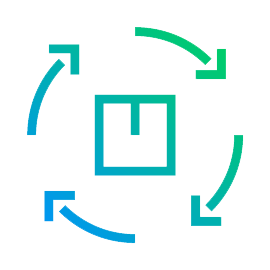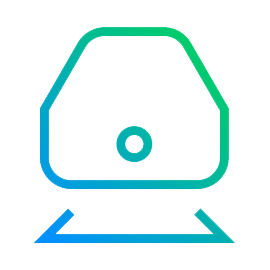Circularity
Circularity
Sustainable connection
The life cycle in six phases
Design & Raw Materials
This phase is about the pursuit of cable design based on ECO-design, sustainable sourcing of raw materials and materials and in-house production of compounds and materials.
We take into account sustainable choice of materials, limiting the amount of materials used, efficient use of raw materials and the use of recyclable and recycled materials. We monitor the performance of our raw material suppliers and challenge them to increase their sustainability contribution. We are at the forefront of eco-friendly innovations made possible by our extensive R&D department. The local production of cables and in-house production of compounds contributes to the reduction of CO2 emissions. For example, by far the largest part of the cables for the Dutch market are produced domestically.
Production
When producing cables, Prysmian Netherlands focuses on implementing energy-saving measures, optimally reusing the waste stream and creating a safe and quality-enhancing environment.
Specifically, this means that our entire production process is continuously optimized. We use recycled materials as much as possible, we limit CO2 emissions by LED lighting and heat recovery, among other things, and we use 100% green electricity. We strive to make economical use of raw materials, such as water and fuel, and we are always looking for ways to package and transport efficiently. The waste stream is optimally utilized and process waste is minimized and reused. We set the highest health and safety standards and apply a thorough quality control system. We demand sustainability certifications from our suppliers and partners in the chain.
Transport
In this phase, it is mainly about reducing CO2 emissions. Prysmian Netherlands ensures the limitation of CO2 emissions through local production and therefore fewer transport kilometers, maximum capacity utilisation of trucks through smart planning and the use of lighter products.
Attention is also paid to the efficient packaging of loads in order to limit the use of plastic. We monitor the performance of our logistics partners and challenge them to increase their sustainability contribution. We also require them to provide sustainability certificates. With regard to the fleet, Prysmian Netherlands aims to drive electric (or hybrid) as much as possible in order to reduce harmful emissions.
Installation
In this phase, Prysmian Netherlands sees it as its responsibility to inform installers, builders and grid operators about the properties and benefits of different cables in terms of quality, safety and sustainability through education, training, documentation and campaigns.
We provide training and develop documentation to ensure that our customers can make the most sustainable cable choice for each application. We also advise clients on their eco-design studies, sustainability plans and circularity approaches. With campaigns such as "All Cables Are Not The Same" we are raising awareness that there really is something to choose from when it comes to quality, safety and sustainability. With our products and services, installers can minimize residual waste and cutting loss during installation. Our reel return system ensures that reels are optimally used and reused.
Use
Most of the CO2 emission of a power cable takes place during the use phase. The resistance of the conductor causes heat to develop. As a result, energy is lost and CO2 is emitted unnecessarily. By choosing the right conductor, less energy is lost and the end user saves a lot of energy.
With our specially developed Eco advice tool, customers choose the most durable cable for every application. This significantly reduces the CO2 footprint by saving energy during the use phase. We also develop fire-safe cables that ensure minimal smoke development and low acidity of the gases in the event of a fire. In the event of a fire, this reduces the impact on the environment. With regard to predictive analyses and life cycle management, we can use software to see whether certain cables need to be replaced or can be used for a longer period of time. This way, cables do not have to be replaced prematurely.
End of Life
The end-of-life phase is mainly about the recyclability of cables through decommissioning. For example, by demolishing a building or by decommissioning a system or network. In the first phase of Eco-design, Prysmian ensures that a cable can be recycled better and that the cable design is as simple as possible in order to limit the number of different materials.
We strive for maximum use of recyclable materials such as thermoplastic insulation, a material used in our innovative P-Laser medium voltage cable. We also strive for maximum reuse with regard to wooden and plastic reels. Our reel return program supports you in this. We are pioneers in our industry and work with partners to create circular solutions, including a circular raw material passport and mapping the CO2 emissions of all our products. This is how we complete the circle, from design to end of life.








